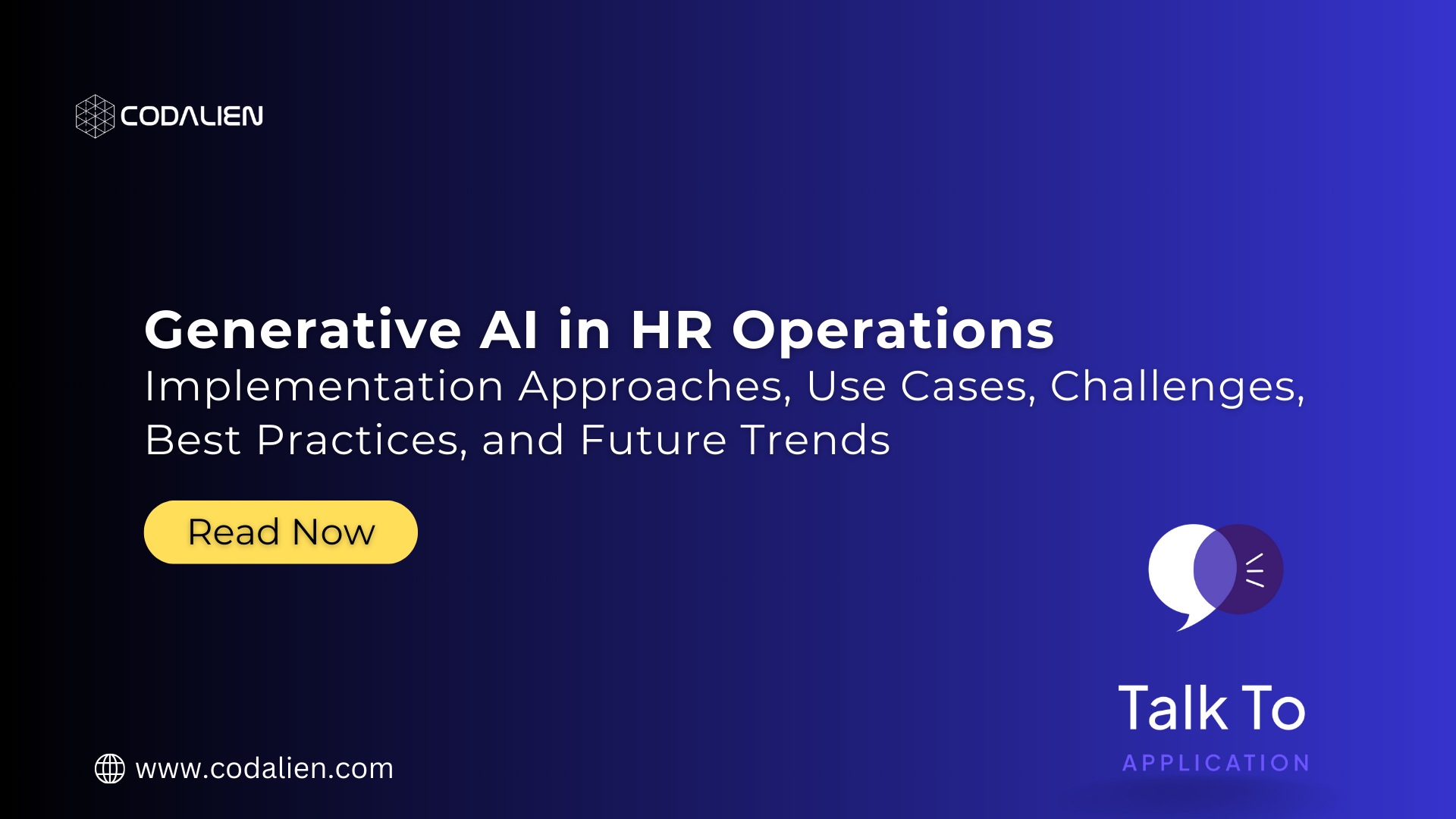Our Blogs
-

Generative AI in HR Operations: Overview, Use Cases, Challenges, and Future Trends
Overview Imagine a workplace where HR tasks aren’t bogged down by endless paperwork or repetitive chores, but instead powered by intelligent systems that think, create, and adapt—welcome to the world of GenAI. Generative AI in HR operations offers a perfect blend of efficiency, personalization, and strategic insight that transforms how organizations interact with their talent. […]
-
Generative AI in Sales: Implementation Approaches, Use Cases, Challenges, Best Practices, and Future Trends
The world of sales is evolving at lightning speed. Today’s sales teams are not just tasked with meeting ambitious quotas but must also navigate a maze of complex buyer journeys and ever-rising customer expectations. Despite relying on advanced CRM systems and various sales tools, many teams remain bogged down by repetitive administrative tasks, a lack […]
-
Generative AI in Due Diligence: Integration Approaches, Use Cases, Challenges, and Future Outlook
Generative AI is revolutionizing the due diligence landscape, setting unprecedented benchmarks in data analysis, risk management, and operational efficiency. By combining advanced data processing capabilities with human-like contextual understanding, this cutting-edge technology is reshaping traditional due diligence processes, making them more efficient, accurate, and insightful. This comprehensive guide explores the integration strategies, practical applications, challenges, […]
-
Exploring the Role of AI in Sustainable Development Goals (SDGs)
Artificial Intelligence (AI) is revolutionizing how we address some of the world’s most pressing challenges. As we strive to meet the United Nations’ Sustainable Development Goals (SDGs) by 2030, AI emerges as a powerful tool to accelerate progress across various domains. AI’s potential to contribute to sustainable development is vast from eradicating poverty to combating […]
-
Future Trends in AI Chatbots: What to Expect in the Next Decade
Artificial Intelligence (AI) chatbots have become indispensable across industries. The absolute conversational capabilities of AI chatbots are enhancing customer engagement, streamlining operations, and transforming how businesses interact with users. As technology evolves, the future of AI chatbots holds revolutionary advancements that will redefine their capabilities. So, let’s start with exploring the AI chatbot trends: Future […]
-
Linguistics and NLP: Enhancing AI Chatbots for Multilingual Support
In today’s interconnected world, businesses and individuals often communicate across linguistic boundaries. The growing need for seamless communication has driven significant advancements in artificial intelligence (AI), particularly in natural language processing (NLP) and linguistics. AI chatbots with multilingual support, are revolutionizing global customer engagement and service delivery. This blog explores how linguistics and NLP are […]
-
How Reinforcement Learning is Shaping the Next Generation of AI Chatbots?
AI chatbots are no longer just about answering “What are your working hours?” or guiding users through FAQs. They’re becoming conversation partners, problem solvers and even reporting managers and sales agents. What’s driving this transformation? Enter Reinforcement Learning (RL)—a type of machine learning that’s changing the way chatbots think, learn, and respond. At Codalien Technologies, […]
-
AI Chatbots for Sales Team Automation: The Critical Role of AI Sales Assistants in Automating Your Sales Team
Sales teams are the heart of any successful business, but managing them effectively can often feel like trying to juggle flaming swords. The constant pressure to generate leads, maintain relationships, and close deals leaves your team overwhelmed, spending more time on administrative tasks than actual selling. Here’s where AI-powered sales assistants step in to completely […]
-
Transforming HR with AI Assistants: The Comprehensive Guide
The role of Human Resources (HR) is critical for the smooth functioning of any organization, from handling administrative tasks to shaping workplace culture and driving strategic decisions. However, traditional methods often fall short of meeting the demands of a modern, dynamic workforce. This is where our Human Resource AI assistants enter —a game-changing tool that […]